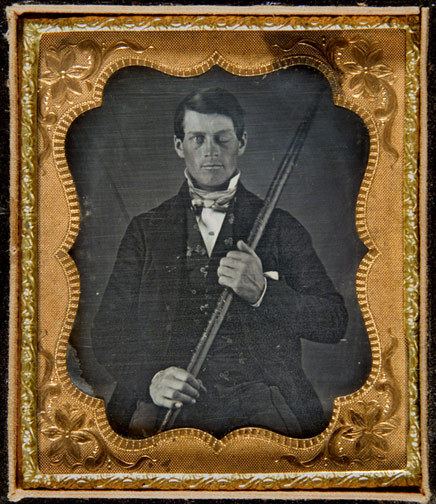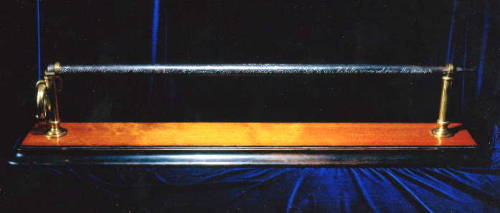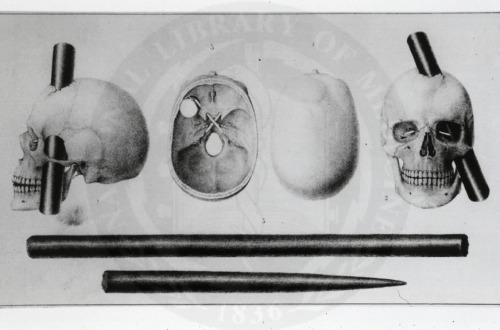odditiesoflife: The Man Who Had an Iron Spike Go Completely Through his Head and Lived – The S
odditiesoflife: The Man Who Had an Iron Spike Go Completely Through his Head and Lived – The Sad and Bizarre Story of Phineas Gage Phineas Gage is the most famous person to have survived severe damage to the brain. His accident illustrates the first medical knowledge gained on the relationship between personality and brain damage. After his injury, he turned into a completely different person - an entirely new personality. A well-liked and successful construction foreman, Phineas Gage was contracted to work for the Rutland & Burlington Railroad in Vermont. In September 1848 while Gage was preparing a railroad bed, an accidental explosion of a charge he had set, blew a 13-pound tamping iron straight through his head. The tamping iron was 1 ¼ inches in diameter. It went in point first under his left cheek bone and completely out through the top of his head, landing about 25 to 30 yards behind him. Despite his torn scalp and fractured skull, Gage remained lucid and rational during the ride to the hospital and was even able to speak. Cage not only survived losing a chunk of his brain, he was able to returned home in only 10 weeks. Unfortunately, Gage’s recovery was not a complete success. The once friendly and well-liked man became mean, impatient, rude, and seemed to have lost any empathy toward others. Those who knew him before the accident said he was “no longer Gage.” Cage worked in several livery stables for the next ten years until 1859 when his health began to fail. He moved to San Francisco to live with his mother and began to experience the epileptic seizures that would lead to his death in 1860. The tale is heart-breaking. His story is still standard content in medical, anatomy, and psychology textbooks. His skull and the tamping iron are currently on display in the Warren Museum Exhibition Gallery in Boston, Massachusetts. -- source link
Tumblr Blog : odditiesoflife.tumblr.com
#history#phineas gage#vintage photos#science#medicine#psychology#boston#massachusetts#19th century#brain damage


